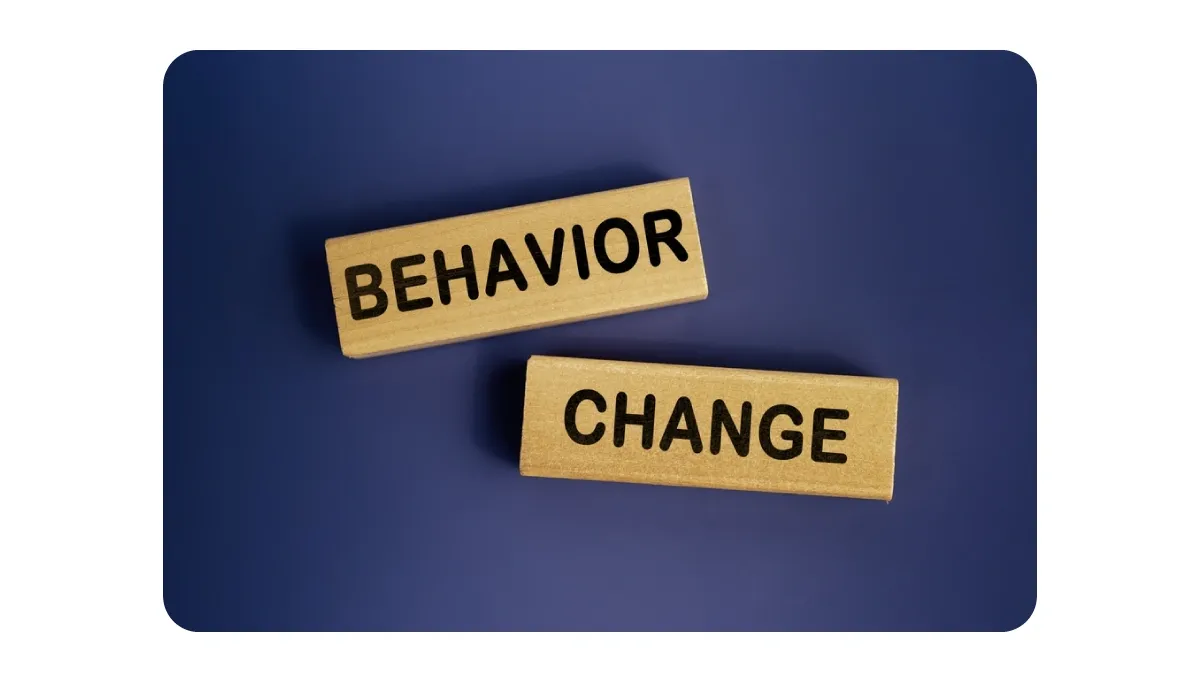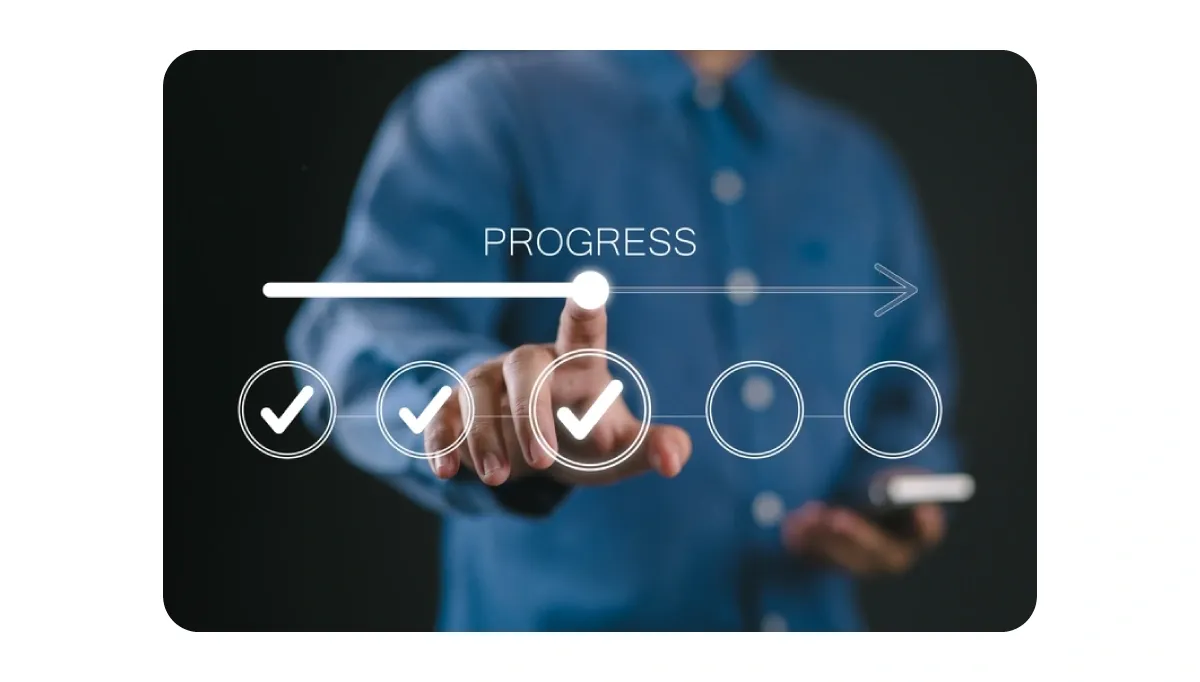Using Behavioral Change Strategies to Improve Employee Health
You've launched a wellness challenge, and sign-ups are promising. But after a few weeks, participation drops significantly. Does that sound familiar?
This happens more often than you might think. Many employers invest in health initiatives that look great on paper. Gym memberships. Wellness webinars. Meditation apps. But despite the effort, the results often fall short. Participation drops. Engagement fades. The outcomes stay the same.
So, what's going wrong?
The answer lies in behavior. Or rather, the lack of behavior change.
Health programs don’t fail because they’re flawed at their core, but because they don’t foster long-lasting habits. Employees may know what to do. But without the proper support and triggers, they struggle to follow through.
As an employer, this creates a frustrating gap. You want to support your teams. You want to build a culture of health. But information alone is not enough. You need to create an environment where healthy behaviors feel natural and comfortable. Easy. Rewarding.
That is where behavioral change strategies come in. These strategies are rooted in psychology. They help people understand why individuals behave in specific ways. More importantly, they offer a step-by-step way to shift habits, not through pressure or one-time events, but through small, consistent actions.
For organizations, the impact can be significant. When employees build healthier habits, you see better outcomes. Lower stress levels. Fewer sick days. Higher productivity. Better retention. And yes, even reduced healthcare costs.
This blog will guide you through the basics of behavioral change strategies. Why are they essential? How they differ from traditional wellness programs. And how you can apply them at work using practical models and real examples.
Let's get into it.
What Are Behavioral Change Strategies?

At its core, a behavioral change strategy is a structured way to help people replace unhealthy habits with healthier ones. It focuses on why people behave the way they do and how you can guide employees to act differently. The goal is to make healthy choices easier and more sustainable.
These strategies do not force change. Instead, they create conditions that support change. The process is gradual. However, when done correctly, it helps people develop better habits over time.
Let's break this down.
Most of us already know what we should do for better health. We know we should move more, sleep better, drink enough water, and manage stress. But learning is not the problem. Doing it regularly is.
Behavioral strategies help close this gap by applying psychological principles such as:
-
Habit formation
-
Positive reinforcement
-
Environmental nudges
-
Self-belief and peer influence
These strategies have proven effective in fields such as public health and education. They are now gaining ground in workplace wellness programs because they address the root of the issue: Habit.
Why Do Traditional Wellness Programs Struggle?
Many companies already offer wellness programs. These include gym discounts, fitness apps, or mental health sessions. The challenge is not about access. It is about follow-through.
Here's a simple example.
Let's say your company offers a meditation app to all employees. Some people use it for a few days. A few forget about it. Others never open it. It is not that they do not want to use it. They just have not built a habit around it. There is no trigger to remind them. There is no clear reward to keep them motivated. No system to guide them.
Behavioral change strategies address this by fostering a continuous loop of small, manageable actions that become ingrained habits over time.
So, What Does a Behavioral Change Strategy Look Like?
A basic strategy includes:
-
A clear and realistic goal,
-
A cue or reminder to act,
-
A simple action that fits into daily life,
-
A reward that reinforces the effort.
This is often referred to as the habit loop. It includes a cue, an action, and a reward. You can see this in practice through platforms like Vantage Fit—for example, daily reminders to log water intake act as cues. The action is logging that data. The reward comes in the form of wellness points or badges.
The system makes change easier. It builds consistency. That is what drives results.
What This Means for Employers
This is not just about offering health resources. It is about helping employees build healthy routines. When people develop better habits, they feel better. They also show up with more energy, focus, and resilience.
In the long run, this leads to fewer sick days, better engagement, and lower healthcare costs.
Behavioral change strategies help move your wellness efforts from passive participation to active, long-term impact.
Why Employee Health Needs a Behavioral Approach

You've probably heard it before. "Our employees have access to great wellness resources." That sounds promising. But here's the real question. Are they actually using them? And more importantly, are those programs making a difference?
For many employers, the honest answer is no.
This is not because your efforts are lacking. Most companies genuinely care about employee well-being. They introduce gym memberships, mental health days, health checkups, and even mindfulness apps. These are significant steps. But the problem often lies in how people engage with them.
Most wellness programs are designed to offer support. Few are designed to change behavior.
And behavior is the key.
If someone joins a fitness challenge but drops out after three days, the impact is lost. If a meditation app is downloaded and never opened again, the outcome remains the same. Employees may have good intentions. But without the right approach, habits don't stick.
This is where behavioral thinking comes in.
It views health not as a single action, but as a pattern of actions. A pattern that forms over time. It takes into account how people feel, what motivates them, and what holds them back.
When you shift your wellness strategy to focus on behavior, you start to see better results. Because now you're helping employees make small, consistent changes. And those changes are easier to maintain.
Let's look at why these matters.
When employees feel healthier, they perform better. That's not just a theory. Back it up with data. Gallup's research indicates that 75 percent of healthcare costs are associated with preventable conditions. These include conditions such as stress, obesity, and high blood pressure. All of them can be improved with better daily habits.
Burnout, for example, costs companies billions in productivity loss. But it doesn't start overnight. It builds up over time. Long hours, poor sleep, low movement, no time to recharge. All of these are behavioral issues.
Therefore, the solution must also work on a behavioral level.
By using the right strategies, you help employees not just participate in wellness activities but truly benefit from them. They don't just go through the motions. They build real habits.
And that's where change happens.
For employers, this approach is more sustainable. It is also more measurable. You can track engagement, habits, improvement over time, and even ROI on wellness investments.
Behavioral change isn't just a concept. It is a more innovative way to run your wellness program. And it meets people where they are, helping them grow from there.
Key Behavioral Change Models Relevant to the Workplace
There is no one-size-fits-all approach to improving health at work. Different people need different types of motivation. That is why it helps to understand a few key behavioral models. These models come from psychology and behavior science.
But don't worry, they are easy to grasp. And once you understand them, you'll begin to see how they can shape your employee wellness efforts more effectively.
One popular model is the Transtheoretical Model, also known as the Stages of Change. It illustrates how people progress through five stages as they form a habit. First, they are not even thinking about change. Then they start considering it. Slowly, they begin to prepare, act, and finally, maintain that behavior over time.
Many wellness programs assume everyone is ready to take action. But that's not always true. Some employees may still be considering a change. Others may have started but lost motivation. This model reminds us that progress is a gradual process. And your programs should meet people at different stages.
For instance, someone new to health challenges might benefit more from low-pressure daily goals. In contrast, someone more experienced may prefer a challenge with higher targets.
Another useful concept is Social Cognitive Theory, which emphasizes the role of self-belief and peer influence in shaping behaviors.
People are more likely to build healthy habits when they believe they can do it, and when they see others doing the same. That's where team challenges and leaderboards come in.
When employees track their progress, see peers succeeding, or even receive a bit of recognition, it boosts their confidence.
It also makes the behavior feel normal. It's no longer "that one health freak on the team" walking every day. It becomes the team culture. Platforms like Vantage Fit tap into this by showing real-time progress and celebrating milestones publicly.
Then there is Nudge Theory. It may sound fancy, but it's actually straightforward. Nudges are small prompts that encourage better choices, without forcing anything. Think about how placing fruit at eye level in a cafeteria leads to more people picking fruit instead of candy.
In the workplace, nudges can serve as gentle reminders to drink water, take a stretch break, or go for a short walk.
These might be app notifications, posters, or in-app tips. The goal is to make healthy choices feel easy and automatic, not like a significant lifestyle change, but like a slight, helpful push in the right direction.
All of these models work well on their own. However, when used together, they can significantly enhance the effectiveness of your wellness program. You support people at every stage of their journey. You help them believe in their ability to improve. And you create an environment that quietly encourages healthier choices, every day.
The best part? These strategies don't require massive resources. Just thoughtful design. And a platform that brings everything together in a way that feels natural and rewarding.
10 Behavioral Change Strategies to Improve Employee Health
Behavioral change is not just about knowing what is healthy; it's also about adopting healthy habits. It is about making healthy actions easier, more consistent, and rewarding. Below are ten practical, science-backed strategies you can apply in your workplace to support employee health.
Each one is easy to implement, flexible, and designed to foster long-term habits.
1. Start with Micro-Habits

Big goals often lead to quick burnout. Micro-habits are small, easy actions that employees can do every day. These include taking a two-minute break between meetings or going for a short walk after lunch. The idea is to build confidence and create momentum through achievable steps.
2. Use Habit Cues to Prompt Action
Habits need consistent triggers. These cues prompt employees to take action without requiring them to think too much about it. Cues can come from notifications, calendar reminders, or simple visual prompts in the office or on their devices.
3. Track Progress Visibly

People feel more engaged when they can see their own progress. Tracking helps build awareness and create a routine. Whether it is through a digital dashboard, a paper log, or a visible checklist, seeing results helps employees stay motivated and focused.
Also read: Elevating Employee Wellbeing with Corporate Wellness Dashboards
4. Leverage Social Influence
When employees set and work towards wellness goals together, they tend to stay more motivated. Peer encouragement, team support, and even a bit of healthy competition can make a big difference. Team-based challenges and shared milestones foster accountability and a sense of connection.
5. Reward the Effort, Not Just the Outcome
Recognition is a powerful motivator. People are more likely to repeat healthy behaviors when they receive a reward for their effort. The reward does not have to be large. Even small incentives or public acknowledgment can boost participation and consistency.
6. Remove Friction from Participation

The easier it is to take part, the more likely employees will stick with the program. If logging steps or joining a challenge feels complicated, people will stop trying. Simpler processes lead to better engagement. Eliminate extra steps wherever possible.
7. Make Mental Wellness Part of the Plan
Behavior change is not only about physical health; it also encompasses mental and emotional well-being. It also includes managing stress, maintaining emotional balance, and staying focused. Adding mental health options such as meditation, journaling, or mood tracking supports employees holistically.
8. Encourage Reflection and Self-Awareness
Employees are more likely to stay consistent when they understand their habits. Provide space for reflection. This can be achieved through self-assessments, weekly recaps, or check-ins that help employees track what works for them and identify areas where they need support.
9. Introduce Variety and Personal Choice

Not all employees are motivated by the same activities. Some may enjoy walking. Others may prefer nutrition tracking or mindfulness. Offering a variety of wellness options gives employees a sense of control and autonomy, fostering a more engaged and productive workforce. It helps them engage in ways that suit their preferences.
10. Use Data to Personalize Future Challenges
Tracking data helps you understand what strategies are most effective, enabling you to personalize future wellness challenges for even better results. Track engagement levels, task completion, and feedback. Use this information to shape future wellness efforts. Personalization enhances relevance, resulting in improved participation and outcomes.
Final Thoughts
For wellness programs to be truly effective, they need to help employees build lasting habits. Behavioral change strategies make this possible by encouraging consistent, sustainable actions.
They help employees take small, consistent steps toward better health. Over time, these steps lead to lasting change.
As an employer, your role is to guide those steps. Make healthy actions easier, more visible, and more rewarding. The results will follow.





